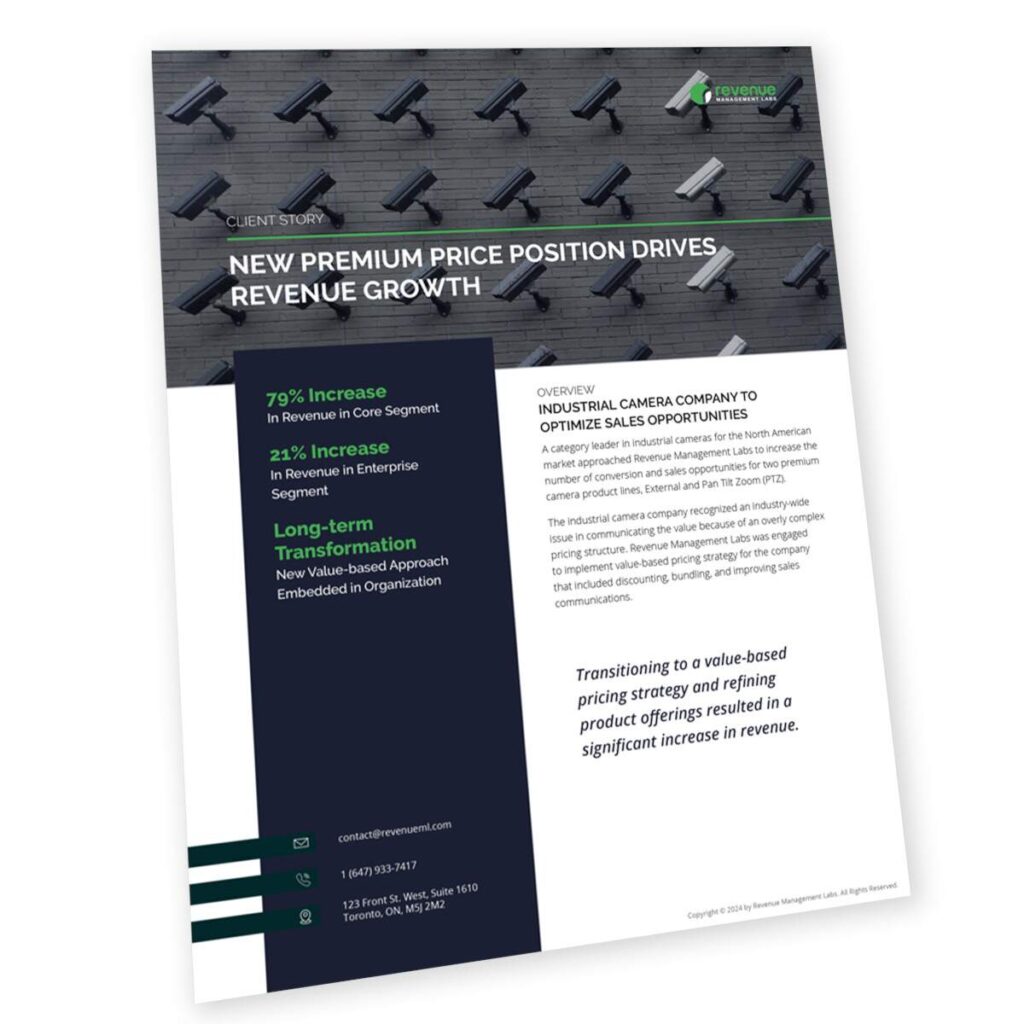Transitioning to a value-based pricing strategy and refining product offerings resulted in a significant increase in revenue.
A category leader in industrial cameras for the North American market approached Revenue Management Labs to increase the number of conversion and sales opportunities for two premium camera product lines, External and Pan Tilt Zoom (PTZ).
The industrial camera company recognized an industry-wide issue in communicating the value because of an overly complex pricing structure. Revenue Management Labs was engaged to implement value-based pricing strategy for the company that included discounting, bundling, and improving sales communications.
In Core Segment
In Enterprise Segment
New value-based approach embedded in organization

Review the advanced analytics behind our pricing strategy and the increase in revenue.
Revenue Management Labs conducted a comprehensive analysis of the price position of their two camera product lines, External and PTZ, and two main business lines, Enterprise and Core. The goal of the data analysis was to understand where the two camera lines stand in terms of similar offers from competitors. From that analysis, Revenue Management Labs developed a pricing strategy that aligned perceived value with price and positioned the two products competitively in their markets and in their business line, Enterprise and Core.
Five main recommendations were included in the pricing strategy:
With nearly every pricing issue, the first step is to conduct an analysis of the pricing structure to understand which levers were driving revenue versus losing. In the case of this camera company, the combination of volume, segment mix, and sales increases but decreasing revenue margins led the experts at Revenue Management Labs to focus on analyzing the product mix and discounting. Then, they broadened the analysis to audit the business and finally, a comprehensive competitive review of the camera company’s current market environment. The resulting analysis gave a 360° view of the pricing structure, customer perception and valued features, and competitive landscape.
Out of the 360° analysis, the revenue management experts built four value maps that gave clear guidance for adjusting pricing going forward. The value maps revealed the camera company was value advantaged in the enterprise segment, which is an opportunity to increase prices, and value disadvantaged in the core segment, which indicates a need to increase discounts.
For a detailed review of the pricing tools, download the full case study on price segmentation.
For a detailed review of the pricing methodology and data analysis,
download the full case study on channel pricing strategy.
After implementing Revenue Management Labs’ five recommendations, the camera company experienced a 79% increase in revenue in the Core Segment and a 21% increase in revenue in the Enterprise Segment.
Aside from the immediate margin improvements, the camera company now has a long-term pricing strategy based on value, in tune with the competitive landscape, and customer centric. The result is a lighter lift for sales with easier to communicate offerings and values, and sustainable profitability.
We are here to help you achieve profitable revenue growth

We will cover the full results from our 2024 Executive Pricing Survey. See how you compare to your competitors both in past performance and for 2024 pricing strategy.